Scientists believe that about 2/3 of the world's population is affected by this parasitic disease or that parasitic disease. Among the different types of parasites in the human body, there are the most dangerous ones, which not only cause discomfort for the patient but can also cause dangerous complications, even death. In our article we will tell you everything about parasites, that is, we will describe the most terrible parasites and list the symptoms of the most dangerous helminthiasis.
Parasites
There are different types of worms and protozoa that live in the human body:

- Worms. These worms normally live in the intestines, but they can settle in the liver, brain, lungs, heart, kidneys, muscles, and other organs. Worms cause dangerous diseases and complications.
- Protozoa and multicellular parasites (protozoa). These pests are common in different latitudes. These human protozoan parasites can infect the intestines, eyes, brain, esophagus, heart, muscles, as well as nerves, liver, skin, and even the genitourinary system. The most common protozoan parasites that live in humans are lichen, lamblia, toxoplasma, Trichomonas, blastocyst, etc. v.
- Other organisms that also infect humans are lice, ticks, ticks, and fly larvae. Their names are exogenous. They can parasitize not only on the surface of the skin, but also in wounds, hair follicles and eyelashes.
- Other parasites are those that more commonly affect subcutaneous tissue, but can parasitize the urethra and nasopharynx. These are the larvae of some species of flies, mosquitoes, and sand fleas.
We have listed the main types of human parasites. But if we talk about the types of parasites that live in the human body at our latitudes, the most terrible of them are:
- pig tapeworm; wide band
- ; pinworm
- ;
- Chinese flukes; roundworm
- ;
- flukes;
- Trichinella;
- pneumococcal;
- overlap
- dwarf tapeworm;
- bovine tapeworm;
- liver fluke;
- pulmonary fluke;
- echinococcus.
The diseases they cause
The most dangerous parasites that live in the human body can cause a variety of diseases. Usually, a disease caused by a particular parasite has the same name as it. Therefore, different types of parasites in the human body can cause the following diseases:
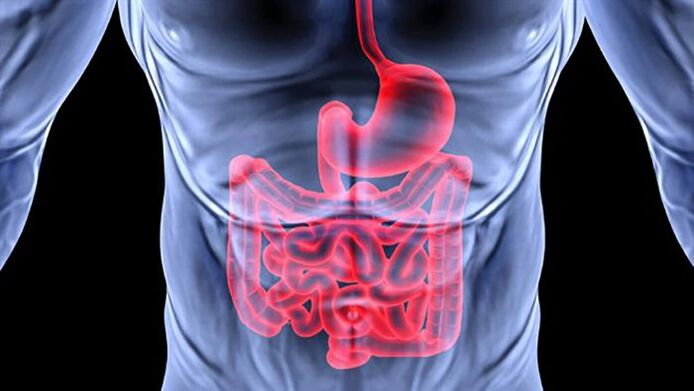
- some human parasites (fluke) cause fluke;
- cestodoses occurring during a tapeworm infection;
- if an adult or child has roundworm in the intestine, nematodes are diagnosed;
- leeches causes sepsis;
- Depression can be caused by scratching.
However, the parasite in the human body can infect many organs. Depending on the localization of the parasite in the human body, the following parasitic diseases are distinguished:
- If the eye is affected, liver cancer, filariasis, hydatid disease, and dilated pupils may occur;
- Diseases of the gastrointestinal tract, caused by protozoan parasites and helminths, - roundworm, helminthiasis, strongyloidiasis, intestinal helminthiasis, intestinal dystrophy and fasciolosis;
- Brain diseases - echinococcosis, toxoplasmosis, alveococcosis and cysticercosis;
- Dermatological diseases - demodicosis, lice, scabies, congestive disease, thrombosis, phthiriasis;
- Pulmonary pathology - echinococcosis, ascariasis, acariasis, alveococcosis, tominxosis, v. v. ;
- Liver diseases - opisthorchiasis, alveococcosis, echinococcosis, clonorchiasis;
- In the mouth, ears, and mouth, the parasite can cause a variety of dilated pupils;
- Heart disease - filariasis and leukemia;
- Diseases of the genitourinary system - pneumococcal disease, urate stone disease, leukemia;
- Vascular pathology - filariasis and schistosomiasis.
Symptoms
We have looked at what types of parasites are in the human body. Now let's look at the main symptoms caused by the simplest human parasites and different types of worms. It is worth noting that the cysts and protozoa that cause disease often become the cause of infection, can remain in the external environment for a long time, waiting for the right opportunity.  When under favorable conditions of the human environment, larvae emerge from cysts, actively develop into adults.
When under favorable conditions of the human environment, larvae emerge from cysts, actively develop into adults.
Separately, it is necessary to explain what is a cyst. Usually, cysts form the simplest single-celled organisms, bacteria, and protozoa. Protozoa cyst is a temporary form of an organism under adverse conditions. In fact, it is a protective shell. Cyst formation occurs at a certain stage in the life of the parasite or under unfavorable conditions.
Roundworm disease
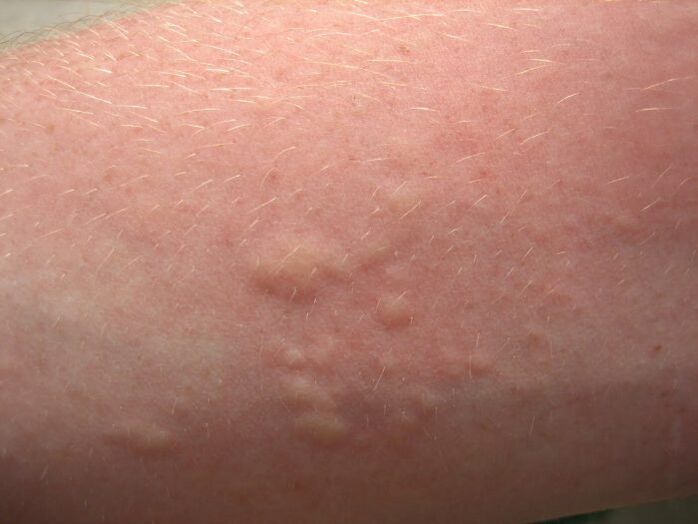
The disease is caused by roundworm. These parasites can live exclusively in the human gut. The complexity of symptoms depends on the intensity of the invasion and the age of the patient. Common signs of the disease are:
- itchy allergic rash (resembling a rash of blisters or urticaria);
- fever;
- general problem;
- sweating too much;
- weaknesses;
- enlarged liver;
- in the migratory phase: difficulty breathing, coughing, wheezing in the lungs;
- anorexia;
- diarrhea and constipation;
- nausea;
- from one side of the central nervous system: irritability, impaired sleep and memory, convulsions, meningitis;
- hepatic abscess, obstructive jaundice, appendicitis, pancreatitis, and obstruction can develop with large invasion.
Teniarinhoz
This disease causes bovine tapeworm. In the early stages, the disease is asymptomatic and can last for many years. Sooner or later, the following symptoms will appear:
- severe in the epigastric;
- nausea, heartburn;
- increased production of saliva;
- vomiting;
- appendicitis, intestinal obstruction, biliary obstruction;
- decrease in body weight in the context of increased appetite;
- vitamin deficiency;
- allergic reactions;
- dizziness, weakness, sleep disturbances, increased stress and irritability;
- increased arterial blood pressure and tachycardia.
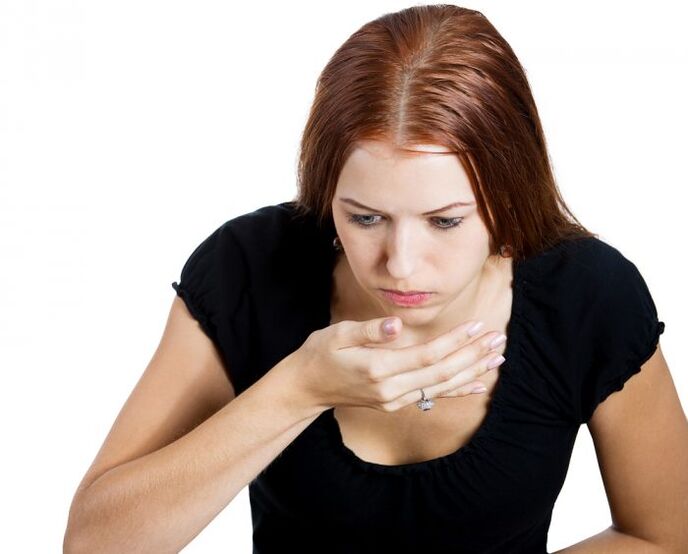
Worm disease
Pinworms cause this disease. This is the most common parasitic disease. Its symptoms are as follows:
- itching in the anus, worse at night;
- scratching and redness in this area;
- difficulty sleeping, teeth grinding, drowsiness, coma;
- anorexia;
- colic, incontinence in children;
- unstable stool, nausea, flatulence, vomiting;
- allergic reactions.
Dog roundworm disease

Toxocara canis parasitize in different human tissues and organs. But regardless of their location, they always cause allergic reactions in the body, which proceed in the following fashion:
- A skin rash that looks like a mosquito bite. The rash can appear on different parts of the body.
- Asthma, manifested as a persistent dry cough with a little sputum.
- Quincke was edema. A person experiences swelling of the skin in the face and neck, which can lead to suffocation and death.
With the exacerbation of Toxocara canis disease, the patient's temperature increases, symptoms of intoxication, loss of appetite and headache appear, lymph nodes increase.
Necrosis (hookworm)
This disease is caused by a helminth called nekator and hookworm. The invasion is manifested by a complex of the following symptoms:
- When the larvae are passed through the skin, various inflammatory skin diseases, urticaria and rashes appear. At the site of penetration there is swelling, itching and burning. The invasive period lasts up to 12 days.
- The migratory stage is also accompanied by allergic manifestations. In this case, the airways are damaged, and bronchitis, pneumonia, tracheitis, and laryngitis occur. The patient has a fever, cough, difficulty breathing and hoarseness.
- Within a few months, the intestinal stage of the disease begins. At this stage, symptoms of iron deficiency anemia and duodenitis appear. Patients with increased irritability, fatigue and sleep disturbances. Women with irregular periods.
Important! In childhood, hookworm infection can cause mental and physical retardation.
Giardiasis
Giardia is a parasitic protozoan disease. A quarter of the population has an asymptomatic transport of this microorganism. In the acute stage, the following signs appear:
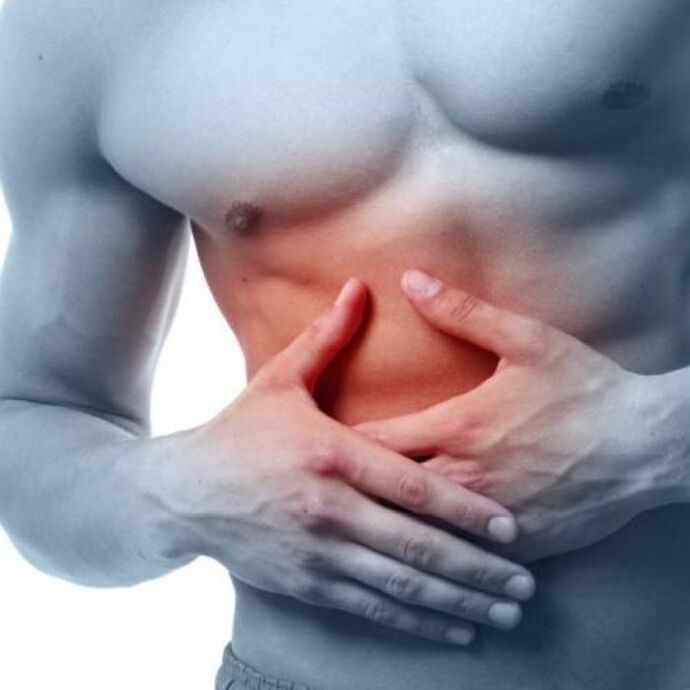 malfunction
malfunction- in the gastrointestinal tract;
- patient was tormented by pain in the right lower hypogonadism and the area around the navel;
- observed flatulence, decreased appetite, belching, nausea;
- diarrhea alternated with constipation, may be frequent (up to 5 times) foamy stools;
- with a subacute episode, intestinal symptoms persisted, patient lost weight;
- with large infiltration intoxication and fever;
- children with itching, hives and fainting;
- during coprogramme protozoa cysts found in feces.
Amoeba disease
Diseases caused by histological amoebas. The disease may be asymptomatic or symptomatic. There are two forms of disease: the gastrointestinal tract and the intestinal tract. These protozoa can affect the brain, lungs, skin, and genital system. But the most common is intestinal infection. Its symptoms are as follows:
- at the beginning of diarrhea, the stools are foamy, then come out with a color like a jelly, like raspberry jelly. Their frequency is up to 20 times a day;
- local severe pain on the right side of the abdomen;
- mild milia;
- after 6 weeks, the acute course may decrease; Examination of
- can detect protozoa in feces.
Important! Amoeba never goes away on its own and often recurs. If left untreated, an amoeba is formed, resulting in intestinal obstruction.
Major liver fluke

The broad tapeworm is the culprit of this disease. Representation of the code types causes the following clinical picture of the disease:
- weight loss, erratic bowel movements, anorexia;
- low temperature;
- are tired;
- cramping abdominal pain;
- anemia, weakness, dizziness, increased heart rate;
- can find debris worms in the feces;
- appeared painful cracks in the mouth;
- depression and irritability.
Teniosis
The disease is caused by a swine tapeworm. The parasite resides in the small intestine and causes the following symptoms:
- constipation, vomiting, diarrhea, nausea;
- vomit and feces may contain segments (proglottids) of the parasite;
- anal itching, abdominal pain;
- did not sleep well, appeared dizzy.
Echinococcosis
Echinococcus may be asymptomatic for a long time. Then, pains appear in the area where the strep cyst is formed. Most often, symptoms are characteristic of a tumor of a particular organ. When the cyst ruptures, systemic intoxication, anaphylactic shock and urticaria appear.
Types of parasites that live in the human body
All types of parasites in the human body have negative effects on health. They infect organs, eat nutrients necessary for human life and release harmful harmful substances. Therefore, it is important to get rid of them in a timely manner.

The human body is affected by many different types of parasites, some living inside the body, others on the surface. They differ in size, in how they enter the body, in the characteristics of their vital functions.
What parasites live in the human body? How do I get rid of them? What precautions are there? These issues are discussed below.
Classification of parasites
Human parasites are very common, they are divided into groups:
- Endoparasitesare parasitic organisms inside the person. This group in turn was divided into protozoa (consisting of a single cell) and helminths (worms). The simplest parasites in the human body are amoebas, lamblia, Trichomonas, toxoplasma. As for worms, there is the division into nematodes (nematodes), flat worms, and tapeworms.
- Parasitesare parasitic organisms on the surface of the human body - lice, ticks, fleas, aphids. In addition to eating human blood, which causes a lot of discomfort (bites, stings, skin wounds), they also carry quite dangerous diseases: typhus fever, anthrax, trypanosomiasis and others.
- Giardia.Giardiasis is a fecal - oral mechanism. Once cysts (not yet formed, with a protective film) are removed from the patient's anus, they spread to vegetables, fruits, and other food products. Through unwashed hands, standing water, inadequate washing of fruits and vegetables, cysts enter the human oral cavity, from where they safely reach the intestines, where they turn into adults again. and multiply again. The result is a vicious cycle that will continue until adequate treatment and hygiene is followed. Symptoms of the disease are weakness, fatigue, headache, diarrhea, abdominal pain and bloating. There may be itching in the anus, a skin rash, bronchial asthma. Features of the disease are weight loss, anemia, weakened immune system. Treatment - Metronidazole, Furazolidone, Tinidazole. Dosage is indicated by doctor.
- Toxoplasma.Infection of these protozoa occurs by contact with infected livestock. In this case, a person is an intermediate host, since the sexual development cycle of the parasite occurs in the animal's body. The disease is manifested by a prolonged rise in temperature to a sub-threshold, general signs of intoxication, the patient has lymphadenopathy, the appearance of pain in the joints and muscles. In addition, the functions of the digestive tract and vision are disrupted, the central nervous system can be affected, there are signs of heart disease and the endocrine system. Complex treatment is prescribed - antibiotics of the group tetracycline and sulfonamide.
- Trichomonas.Trichomonas are sexually transmitted, the risk of infection on contact is minimal, but still present. Symptoms in women are itchy, red swollen genitals, burning sensation and foamy discharge. Men may have difficulty urinating and draining their discharge. Treatment - anti-trichomoniasis drugs.
Pinworms are an intestinal parasite
The most famous internal parasite is the pinworm. They live in the intestines and cause a disease called intestinal helminthiasis. This parasite not only affects humans, but also monkeys. Risk group - children of preschool age, according to statistics, intestinal helminthiasis is diagnosed in half of the children aged 2 to 10 years old.

Worms are passed from person to person, you can be infected through anything the sick person has used or through a handshake. The main condition for infusing pinworm eggs is not to wash your hands after contact, especially before eating. Worms, or rather their eggs, can be carried by flies and cockroaches.
Pinworms can only live in the intestine, they are especially comfortable in the thin segment, in the colon and cecum. For mating, the parasite chooses the ileum, from which the female crawls out through the anus and lays eggs in the anus. The manifestations of pinworms on the body are itching in the anus, allergies, fatigue, anemia, abdominal pain, exhaustion.
Levamisole, mebendazole, albendazole and other anthelmintic drugs are prescribed for the treatment of intestinal helminthiasis. Pinworm prevention is based on hand hygiene. They must be washed after visiting any public place.
Roundworm - roundworm
The length of an adult can be up to 40 cm. The nematodes live in the human gut, their eggs naturally hatch, then they continue to grow in the soil, staying behind until they re-enter the human body again. Dirty hands and unwashed vegetables are ways of infection with roundworms. Roundworm eggs are covered with a shell that does not dissolve in the human stomach and allows the roundworm to survive and enter the intestines, where mature individuals grow.
Roundworm disease can be asymptomatic for a long time. Then, symptoms appear, depending on the location and stage of the parasite's development. In the early stage of roundworm disease, the patient may be worried about fever, cough with sputum, skin rash, migraine, lymphadenopathy, liver and spleen may appear. In the late stage, when the parasite has entered the intestine, stool disorders (dysentery, cholera-like symptoms, signs of typhoid fever) are observed. There is a feeling of pain in the abdomen, a pronounced weight loss and fatigue
Broadband
This parasitic infection occurs through fish. This is the worm's intermediate host. It is not necessary to eat to become infected, sometimes just contact with infected fish is enough. That is why it is important to handle your hands, knives and cutting boards very carefully after cutting fish.
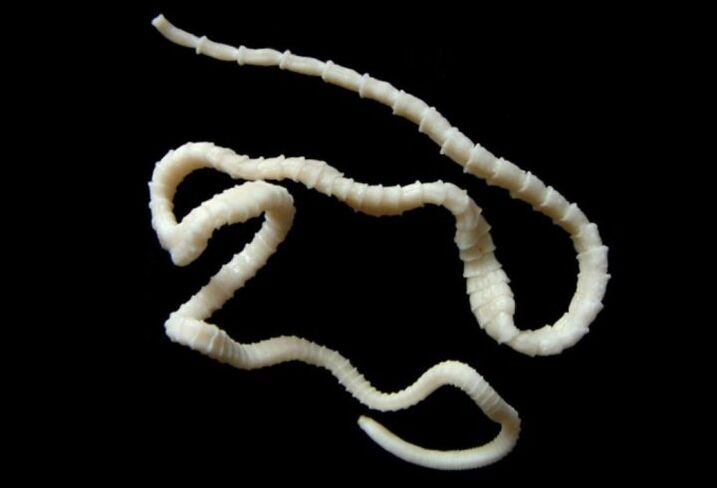
Neither the worms nor their larvae are passed from sick to healthy people. Symptoms of infection are nausea, vomiting, abdominal pain, increased or decreased appetite, digestive disturbances. The first signs of illness may appear a month or two after infection. As a result of the long-term presence of the parasite in the human body, pallor of the skin, headache, increased heart rate, a decrease in blood pressure, weakness, anemia occur. Treatment is aimed at destroying the worm. To do this, use Praziquantel, Niclosamide.
Beef tapeworm
A cow tapeworm can be up to 12 m long. It is hermaphrodite that can produce more than 100, 000 eggs, which is excreted in the feces. The eggs fall into the soil, then on plants, which are eaten by cattle. In the animal's body, the egg becomes a larva, which is localized in the muscle. If a person eats contaminated beef, the larvae enter the intestines. The larvae are not transmitted from person to person.
Adult worms have a head with four suction corners, and a neck and body composed of many segments. The number of segments is constantly growing, the mature ones that can separate from the worms and burrow out of the human gut.

Symptoms of the disease are nausea, vomiting, gastrointestinal disturbances, increased salivation, dizziness, weakness, nervousness, fatigue, atopic abdominal pain, allergies, variableimpact on cravings.
To remove the bovine tapeworm from the body, there is a scheme of 3 phases: preparation (body cleansing), antiparasitic drug treatment (Biltricid, Praziquantel, Niclosamide), recovery(diet, herbal medicine).
Pig tapeworm
Patients can be infected with swine tapeworms through dirty hands, undercooked meat, dirty water, sick people can discharge fragments of the tapeworm and their larvae into the environment with vomit and feces.  Worms can live in the human body up to 15-17 years, it attaches to the intestinal mucosa, its larvae can spread throughout the body in the bloodstream and attach to any organ. It is especially dangerous if the larvae enter the brain.
Worms can live in the human body up to 15-17 years, it attaches to the intestinal mucosa, its larvae can spread throughout the body in the bloodstream and attach to any organ. It is especially dangerous if the larvae enter the brain.
Pigs are intermediate hosts; People who regularly come into contact with raw meat are most at risk of contracting this parasite. Pork chains can become contaminated both on contact and from inadequate heat-treated meat. To destroy all the larvae of the pork tapeworm in the meat, the meat must be cooked for a long time or frozen for 2-3 weeks.
The swine tapeworm can affect the small intestine, liver, brain, visual organs, muscles, etc. v. If the tapeworm affects vital organs, then a person can become paralyzed or even die.
Symptoms of swine tapeworm: allergic reaction, abdominal pain, nausea and vomiting, weakness, dizziness, headache, weight loss, itching in the anus. Worms infiltrate the intestinal lining, so the symptoms are very similar to inflammatory bowel disease.
Treated using drugs that paralyze the worms, so it cannot attach to the intestinal wall and escape. But at the same time, it emits a large amount of toxic substances, which can cause anaphylactic shock in humans. Therefore, the treatment should only be carried out under the supervision of a doctor.
Parasites in the mouth
Parasites in the human mouth can often be represented by the following species:
- Trichomonas;
- oral amoeba;
- Diptera larvae (oral thrush).
The clinical image might look like this:
allergy- ;
- weakness, weight loss;
- has a bad smell from the mouth;
- sensation of movement in the larynx;
- itching and sweating;
- nausea, loss of energy.
Worms that live in the mouth can destroy teeth, creating pus on the mucous membranes and on the tongue. Treatment is indicated only by the doctor taking into account existing symptoms, as well as types of parasites. A prerequisite for treatment is to examine all people in contact with the patient.
Summary
Above, not all are considered, even the most common types of parasites that can live in the human body. It is important to understand the great danger of that neighborhood: worms in humans can have very serious consequences and ultimately the death of their owner. Therefore, it is very important to promptly diagnose the parasite and eliminate them. As for precautionary measures, they mainly include hygiene and high-quality barbecue.






































